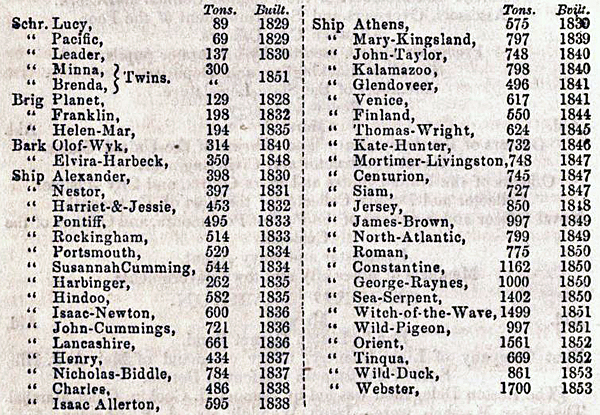The old Boyd-Raynes House – sometimes referred to as the Boyd House, the Raynes House, and the Colonel Nathaniel Meserve House – was situated on the southwest corner of Raynes and Maplewood Avenues, opposite the North Cemetery.
Colonel Nathaniel Meserve, a skilled Portsmouth shipwright, built himself a home here around the year 1740 and a shipyard on the waterfront nearby. The most famous ship he constructed was a fifty-gun man-of-war christened “America”, built in 1749 for the Royal Navy.
Colonel Meserve served as a commissioned officer in the British Army before the American Revolution. He was a Lieutenant Colonel at the Siege of Louisburg in 1745 and used his carpentry skills to build sledges that were essential in moving siege cannons through a swamp. Later promoted to full Colonel for this service, he commanded all of the troops from the Province of New Hampshire during the Crown Point (New York) Expedition of 1756, during the French and Indian War. He and his oldest son tragically died of smallpox during the second Siege of Louisburg in 1758. The same smallpox outbreak also killed Colonel John Hart, who had sold the North Cemetery land to Portsmouth in 1753. Another son of Colonel Meserve, George Meserve, was notorious for being appointed the Stamp Master of Portsmouth. In 1765, he was burned in effigy at Haymarket Square.
In 1764, the house became the property of a wealthy merchant named Peter Livius and his wife, who lived here for several years. Livius dammed the creek and built several mills.
Another British officer, Colonel George Boyd, purchased Colonel Meserve’s home around 1771. Colonel Boyd enlarged the house and added an elaborate garden, with outbuildings and decorations, surrounded by a white fence. The property was so large that it became known as the “White Village”. At the time, this part of the North Mill Pond was known as Boyd’s Creek.
As an aging and loyal subject of the British Crown, Colonel Boyd chose to sit out the Revolutionary War in England and sailed to his home town in 1775. After peace was declared, he boarded a ship bound for Portsmouth in 1787 with a peculiar piece of cargo, a sarcophagus He died two days before reaching the United States and now lies beneath it in the North Cemetery, opposite the site where his house used to stand. His son, William Boyd, inherited the estate.
George Raynes purchased the property in 1832 and turned the shipyard into a booming business. From 1832-1855, he constructed from sixty to seventy ships of all sizes. Below is a partial list published in The Portsmouth Jubilee, an account of a celebration that took place on July 4, 1853.
Some of the largest and fastest clipper ships that ever sailed were constructed at the Raynes shipyard, including the Sea-Serpent (1850), the Witch-of-the-Wave (1851), the Webster (1853); and the Sierra Nevada and Coeur de Lion (1854).
Colonel Nathaniel Meserve's original house is on the right; Colonel George Boyd built the center portion, and master shipbuilder George Raynes later constructed the addition on the left. These 1935 photographs from the Library of Congress Online Catalog were captured for an Historic American Buildings Survey (HABS). My 2013 photograph shows the approximate location of the building, which was torn down in 1939.







No comments:
Post a Comment